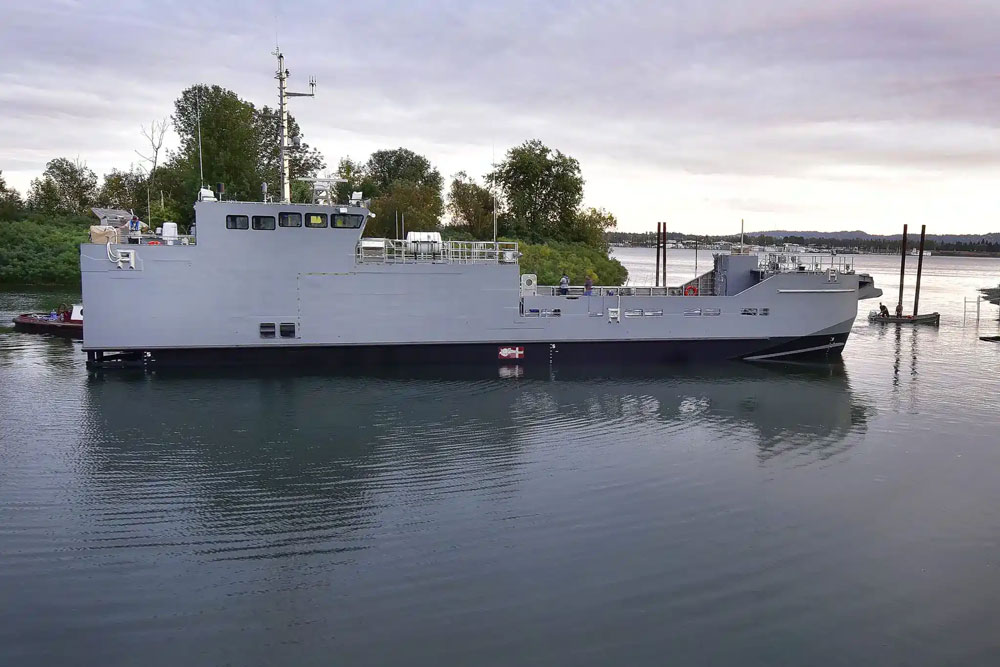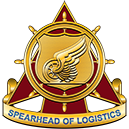
An Army maneuver support vessel. Photo: Rae Higgins, U.S. Army Program Executive Office Combat Support & Combat Service Support
Army watercraft officials seek maritime industry insight at WorkBoat Show
By Benjamin Hayden, WorkBoat
December 4, 2023
In its strategic efforts to modernize its watercraft fleet, the Army is turning to the maritime industry for support amid increased demand in the Indo-Pacific region. Over the next five years, Army Watercraft Systems (AWS) aims to launch projects ranging from sub-system upgrades in communications and navigation suites to the development of new vessels.
During a panel at the International WorkBoat Show (IWBS), titled "U.S. Army Watercraft Fleet Modernization," Nate Leightner, project officer at AWS, emphasized the importance of industry collaboration. "We've got opportunities. We've got challenges. We're looking to get industry input and partner," he said. ““We're here to talk a little bit about what we're working on. And what we're seeing coming at us and ask for some input, identify some opportunities where industry can get involved. If we can enhance collaboration, we're absolutely moving towards success, in our opinion.”
Eric Gorman, AWS's program officer, provided an overview of the Army's fleet portfolio, including logistics supply vessels, landing craft utility, and loading craft mechanical. Plans for future developments, such as maneuver support vessel (MSV) heavy and MSV light, were also outlined.
Addressing challenges in hiring tradespeople, Randall Fischer, program support manager for AWS, expressed a desire to engage with industry to ensure the Army's vessels remain operational during test and operational events.
“The problem statement can best be summarized as the MSV(L) requires a globally positioned and skilled marine maintenance management support solution to provide me and support to the vessel. The a\Army lacks at this time and this capability to maintain the boat. That's not uncommon for new systems,” said Fischer. “This is a new system of the Army. It's new technology for the Army. And as we go through the program, and develop the necessary tools and skills for the soldiers to maintain the system, in that interim period, we lack the ability to maintain it."
Darryl Powell, senior military science instructor for the Army, contextualized the focus on watercraft in the national defense strategy, highlighting the strategic importance of the Pacific region and the need for solutions to navigate its vast expanse.
“When we develop capabilities, we develop them for war. And a lot of you are probably asking, ‘Well, why Army watercraft? Why now?’" Powell asked. "To get to that answer, we have to go back to 2011 when President Obama pivoted to the Pacific. In brief, he doubled down in 2015. President Trump further bolstered that in 2017.”
Leightner concluded the discussion by detailing ongoing initiatives, including a trade space analysis for maneuver support vessel heavy requirements, the development of a digital engineering environment, and active pursuit of industry input through concept market surveys. Emphasizing the desire for immediate and industry-informed solutions, he expressed the Army's commitment to forming partnerships that go beyond minimal requirements and informed their strategic pathways.
